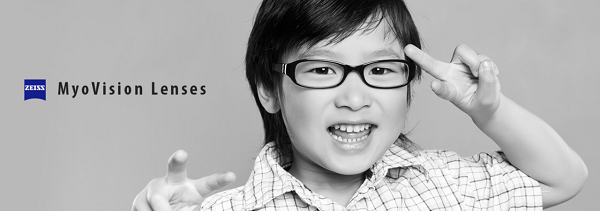By 2050, 5 million Singaporeans will be myopic. 15% of this group will have high myopia, which is defined as having a prescription above 500 degrees. It's associated with serious eye conditions, such as retinal detachment, cataracts and glaucoma.
Children who develop myopia by preschool or primary school are at an increased risk of high myopia in adulthood. The key to reducing high myopia is to delay early onset myopia in children.
This is part 2 in my 2-part series covering effective myopia prevention methods and myths. In Part 1, I talk about effective methods for slowing the progression of myopia.
Below are some popular myopia prevention myths in Singapore that I often encounter:
Myopia prevention methods that do not work:
1. Pinhole glasses

Have you ever seen pinhole glasses? They used to be available at pharmacies like Watsons, but are now generally only available over the internet through websites like Qoo10.
Do not waste your money on these gimmicks. They do nothing to help your eyes or vision.
This link says it all: Case Watch report on settlement of charges of misleading claims.
2. Eye exercises
Remember those eye exercises you may recall doing in Primary School? These exercises, including the Bates method, have been shown NOT TO WORK by good studies.
In one study, 149 students performed the eye exercises regularly, while the others did not. Myopia rates increased in both groups at the same pace.
The study's lead ophthalmologist felt that it was because the children were unable to perform the massage in a suitably precise manner. However, it is also hard to find a biologically plausible explanation why this would work, and thus far there is still no scientific evidence to support the benefits of eye exercises, apart from its relaxing properties.
3. Underpowered glasses
Many people think that undercorrecting myopia may help to slow myopia progression, because when myopia is undercorrected, the ciliary muscles of the eye do not have to work as hard to focus for near vision.
Unfortunately a randomised controlled study actually showed otherwise, with undercorrecting myopia causing it to progress faster. Wearing glasses of a much lower degree means distance vision is blurred, which could also affect the child during classroom and other activities.
Myopia prevention methods that MAY work (the evidence/effect is weak):
1. Bifocals/Progressive lens

Bifocal lens are glasses where the top half is for distance vision, and the bottom half is for close up work. A group of researchers in Singapore did a comprehensive study to assess if bifocals might slow myopia progression.
Unfortunately, almost all of these trials failed to show any benefits. This is why most eye doctors do not recommend using bifocals alone as a way to slow myopia progression.
One study did show some small effects - if you religiously wear bifocals for 3 years, then your myopia would have increased by 280 degrees, rather than 300 degrees - a difference that's hardly worth the expense of wearing them.
2. Rigid gas permeable contact lenses (RGP, or semi hard contacts)
At the age of 11, I was introduced to "hard" or RGP contact lenses, in the hope that it could slow down the progression of my myopia. In my case, it wasn't that successful.
A well conducted study showed that RGP lenses do not slow down the growth of the eyeball (which is responsible for myopia), but may have an effect on reducing the curvature of the cornea.
Because corneal curvature changes are temporary, the slowed myopia progression is unlikely to be permanent. Hence, the authors concluded that children should not be fitted with RGP lenses solely to slow the progression of myopia.
3. Orthokeratology
Orthokeratology (OK or Corneal Refractive Therapy/CRT) takes the concept of corneal flattening using pressure from a lens one step further.
RGP lenses of a special shape are worn to sleep, and removed during the daytime. Your cornea retains the ideal shape, which corrects long/shortsightedness and astigmatism. After a few days of not wearing the lens to sleep, this effect is lost, so the power lowering effect is temporary.
But does it stop myopia from increasing? Studies have indicated that OK lenses have an effect somewhere between soft contact lenses and using atropine eyedrops. Do bear in mind, however, that wearing contact lenses to sleep increases the risk of eye infections.
4. Myovision by Zeiss (glasses which reduce peripheral hyperopic defocus)

Studies have shown that Myovision appears to have a beneficial effect ONLY in younger children who had myopic parents. Why it'd work for this particular subgroup of people is unknown, but could reflect a weak effect, or a chance finding.
Another study found no statistically significant differences in the rate of progression of myopia between the control and Myovision lens wearing group.
I hope that this post helps clear some common misconceptions about myopia and preventation methods. To read more about effective methods to slow the progression of myopia, read my earlier post here.
For any other eye-related or myopia questions, head over to the Ask A Doctor section.
Dr Por Yong Ming is an eye specialist working at Eye Surgeons. He has special interests in cataract surgery, LASIK and corneal surgery, as well as childhood shortsightedness. Dr Por strongly believes in the value of patient education. In his free time, he enjoys a good game of tennis, and is currently dabbling with a planted fish tank at home.
Would you like to ask any related health questions?
You can Ask A Doctor right away, or view the complete list of Human Sessions.
References:
Morgan IG et al. The epidemics of myopia: Aetiology and prevention. Prog Retin Eye Res. (2018)
Wu PC et al. Epidemiology of Myopia. Asia Pac J Ophthalmol (Phila). (2016)










